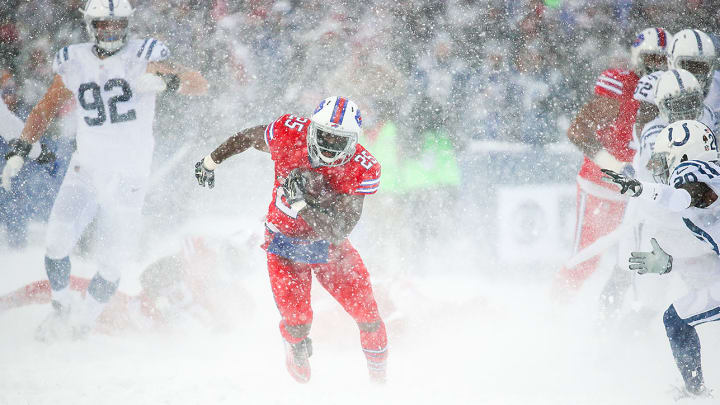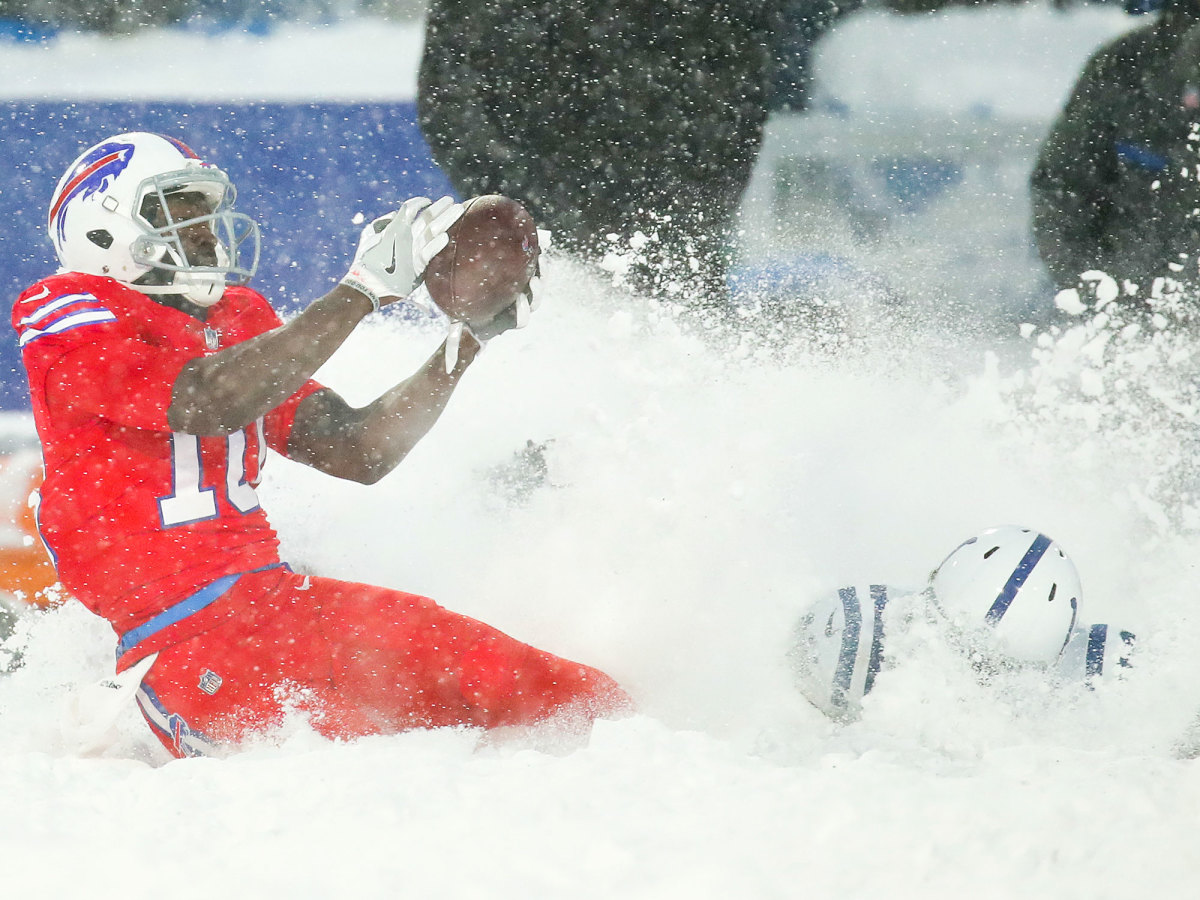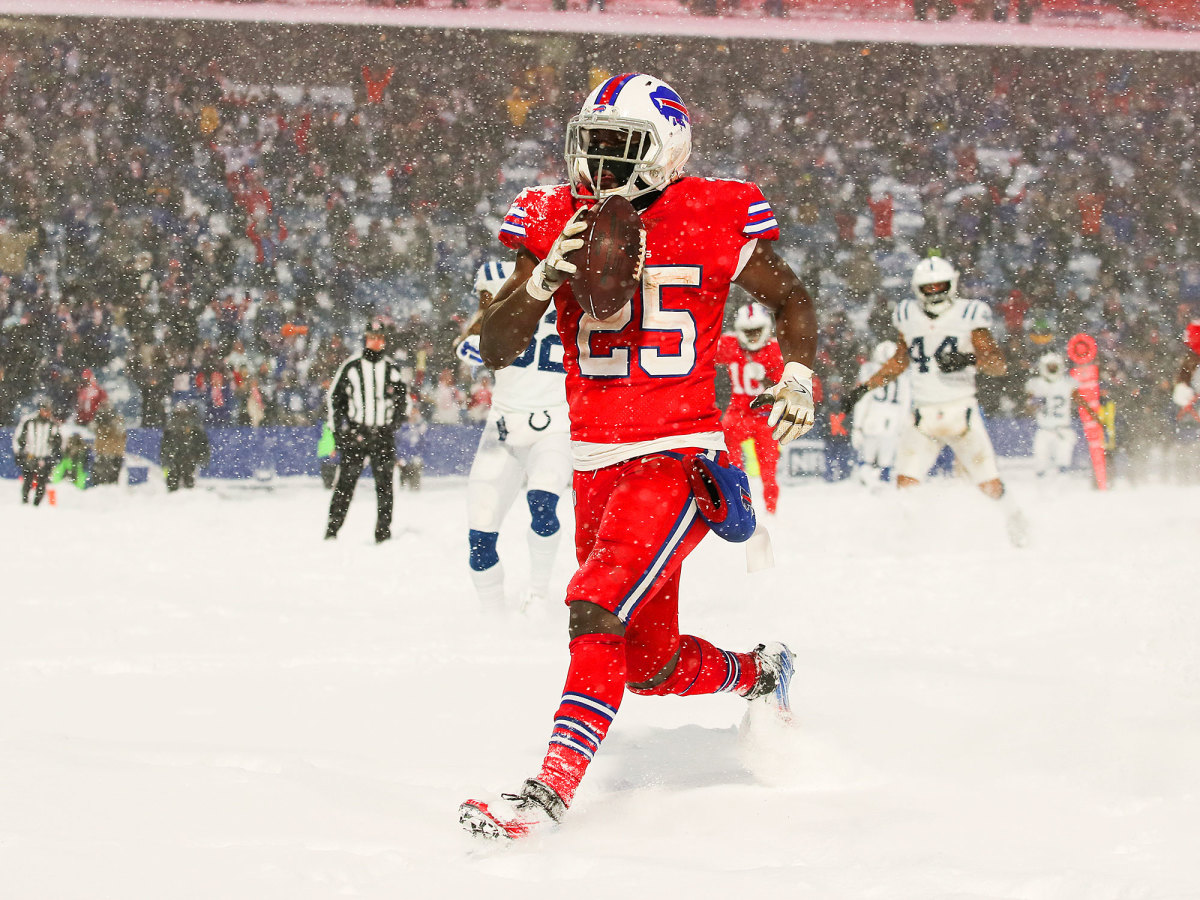'Once In A Lifetime Conditions': A Closer Look At CBS's Terrific Broadcast of Bills-Colts Snow Game

Jim Cornell had a distinct view of Sunday’s snowpocalypse-like conditions in Buffalo for the Bills’ 13–7 overtime win over the Colts.
He directed the game for CBS Sports.
“It was worse than what you saw on television,” Cornell said. “I directed another snow game, but nothing like this where you could not see a yard marker.”
Cornell, producer Sellers Shy, on-air announcers Spero Dedes, Adam Archuleta and Steve Tasker—and particularly the camera operators working the game at New Era Field—did a tremendous job providing viewers with terrific images given the lake-effect snow that hit Buffalo before game time.
Media Circus: The Best Journalism of 2017
The overriding challenge for the entire day, Cornell said, was whether the CBS Sports production group would be able to see the field given the conditions. He said at one point early in the game he thought they might have to use the cart camera as the primary game camera because it was the one situated low enough to cut through the snow. Cornell said the replays were basically the same as a regular broadcast outside of a couple of plays in the first quarter where the snow was so heavy that some of the cameras on the right side of the field could not get a view. “The cameramen were having trouble getting a reference to where the players were on the field because there was no reference,” said Cornell, who has directed NFL football for 10 years. “It was just white.”
CBS had eight manned cameras at the game—one on the left 25-yard line, one on the right 25-yard line, one in the broadcasting booth on the 50-yard-line, one in the high left end zone, two low-end zone cameras on both sides of the field, a hand held camera that was on the field, and the cart camera. Think about this: Those running the cameras started on the field prior to the game for live shots for The NFL Today pregame show and then worked the entire game in those elements including postgame, with only halftime providing a couple of minutes of relief. The camera operators—John Lawrence, John Lorusso, Mike Mathews, Don Miller, Mike Serio, Dave Swaine, Tony Toste (the handheld) and Bob Wishnie—were the unsung heroes of that telecast. (Most of you understandably missed the broadcast — it only went to four percent of the country. Thankfully, the Red Zone channels provided some heavy doses of the game.)

Tasker worked a snowy Bills-Browns game a few years ago in Cleveland which he said was very bad, but he called Sunday’s conditions much worse because it snowed throughout the entire game, and with different kinds of snow. “Small wet snow, then big white fluffy snow, then windy sideways snow; it just never let up,” Tasker said. He played a vital role because he was constantly on the talk-back (the communication device a sideline reporter uses to talk with the production truck) with Cornell and Shy to provide updates on the conditions and give firsthand accounts of how much the players were struggling to see. “It was once in a lifetime conditions,” Tasker said.
That’s a big statement given Tasker was a Bills player for 11 years and has lived in the Buffalo community since 1986. “I have never seen the franchise play a game in these conditions,” Tasker said.
Cornell said Dedes and Archuleta called most of the game off the monitors in the broadcast booth because looking down at the field was little help. One slight advantage was that the broadcasters knew most of the plays would be running plays. Archuleta was unable to use the telestrator because of the weather.
Maybe the best sequence of the game: The production team got a great shot of Colts kicker Adam Vintatieri’s extra point to tie the game at 7-7 with 1:16 left.
Oh my goodness, @adamvinatieri. Got it! ❄️❄️❄️ #Colts https://t.co/mQAhS5jjBe
— NFL (@NFL) December 10, 2017
“I wanted to show with one camera how far the extra point was [43 yards], one camera just on Adam when he attempted it, another camera that would be tight to the line of scrimmage in case there was a block and then the high end zone camera would cover the play by play,” Cornell said. “We also had cameras on the coaches. You are conditioned to cover this stuff and the snow really did not affect what I was going to do. Visually it looked terrific and for an extra point it made it exciting for us because were able to set it up with everyone clearing the field. It’s a matter of the camera men, who really know what they are doing, doing what they do. I am communicating with them so we can have a sequence of events.”

Viewers had a clear shot of LeSean McCoy’s game-winning 21-yard run but Cornell said he was disappointed in the sequence because there was a blind spot in the camera coverage when McCoy started running in the end zone toward the crowd to celebrate. Also, the shots during the game-winning score from the handheld camera on the field were a little blurry because there was so much condensation on the lens of the camera. One of the last CBS staffers to leave the field was Tasker, who had post-game interview duties.
“All the Bills guys coming off the field were really stoked, and then to talk to [quarterback] Joe Webb who had been on a lifelong journey since the beginning of the game was wild," Tasker said. "The lights were on at the stadium at it was only four in the afternoon but the sky was black and there was snow. I was dressed warm so that wasn’t a problem for me but because of the problems we had communicating I was hoping it was all getting through to the truck. I have done some snow games and cold games from the booth and I was at Super Bowl 47 when the lights went out in New Orleans. I have done pregame hits in snow but as far as being on the sidelines in conditions like that, I don’t know if there has been more than a handful games like that in the entire history of the league. Even in Buffalo, these were epic conditions.”
